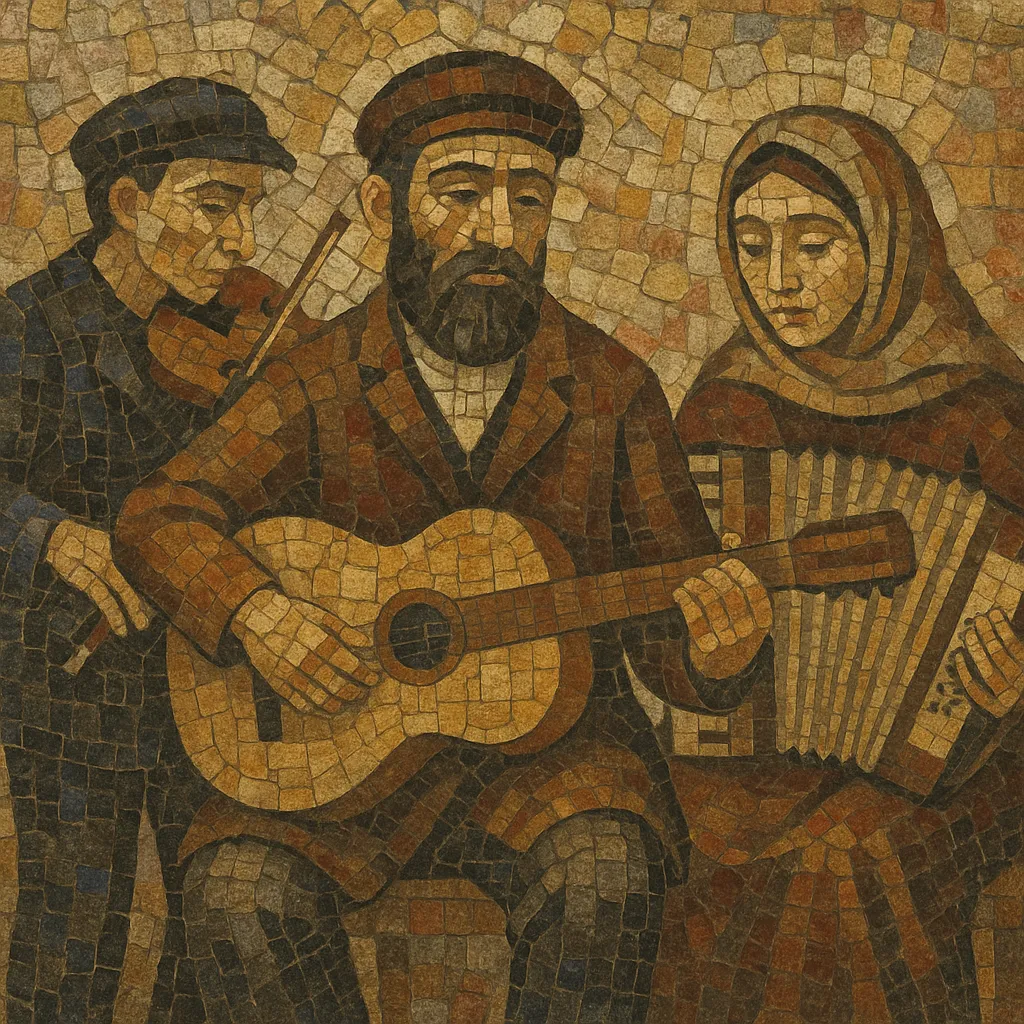Yiddish folksong is the vernacular vocal tradition of Ashkenazi Jews, sung in the Yiddish language and rooted in the everyday life of Eastern and Central Europe. It encompasses lullabies, love songs, wedding and dance tunes, work and street songs, humorous couplets, and political or devotional pieces.
Musically it blends Jewish modal practice with Slavic and Central European folk idioms. Typical features include minor tonalities, modal scales such as Freygish (Ahava Rabbah/Phrygian dominant) and Misheberakh (often akin to Ukrainian Dorian), flexible rhythms with parlando-rubato phrasing, and expressive ornaments (krekhtsn “sob-like” grace notes and kvetch “bent” tones). While often sung unaccompanied, performances frequently use small ensembles—violin, clarinet, tsimbl (hammered dulcimer), accordion, and later guitar or piano—drawing on the neighboring klezmer dance tradition.
The repertoire carries the social memory of the shtetl, urban immigrant life, and the labor movement, and it survived through oral transmission, community songbooks, and later field recordings and stage interpretations.
Yiddish folksong coalesced in the everyday life of Ashkenazi Jews across the Pale of Settlement during the 19th century, though its roots go back earlier. Drawing on synagogue chant (chazzanut), Hasidic nigunim (wordless devotional melodies), and surrounding Polish, Ukrainian, Russian, and German folk repertoires, songs traveled via weddings, marketplaces, and family gatherings.
As Jewish urban culture expanded, collectors and composers began publishing and arranging folk material. Yiddish theater and cabaret popularized topical and sentimental songs, while professional singers carried them into cafés and concert halls. Large-scale migration to the United States brought the repertoire to New York and other centers, where songbooks, 78-rpm records, and community events preserved and adapted the tradition.
The Holocaust devastated the communities that nurtured Yiddish song, yet survivors, émigrés, and collectors safeguarded the repertoire. Ethnographers like Ruth Rubin recorded tradition bearers, and concert artists such as Sidor Belarsky and Theodore Bikel brought Yiddish songs to broader audiences, often with art-song accompaniments.
From the 1970s onward, a klezmer and Yiddish cultural revival reanimated interest in folksong. New ensembles and educators connected archival sources to contemporary performance, integrating historically informed ornamentation and language coaching. Today, Yiddish folksong lives in classrooms, festivals, and recordings worldwide, resonating as both a cultural archive and a living creative practice.


